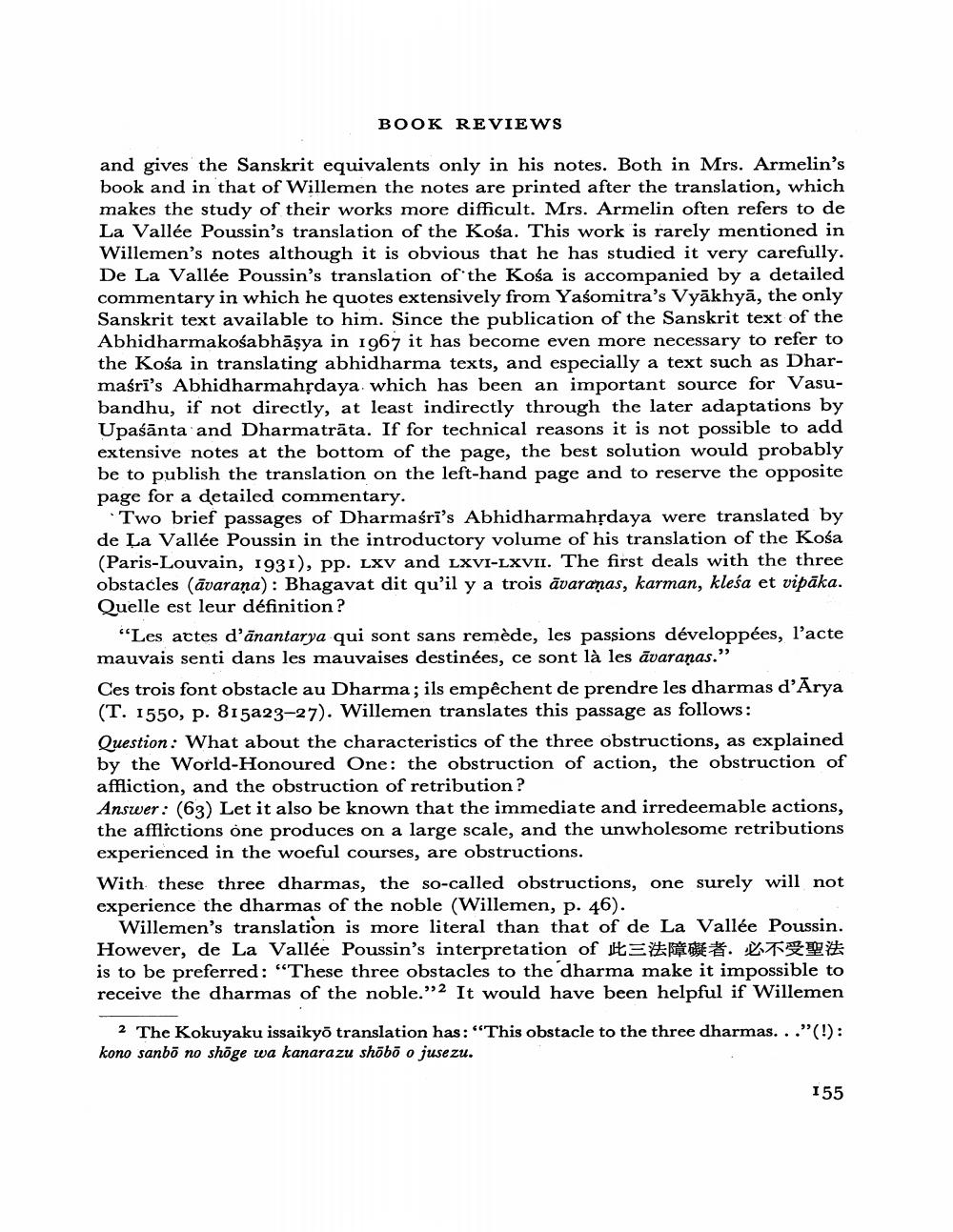________________
BOOK REVIEWS
and gives the Sanskrit equivalents only in his notes. Both in Mrs. Armelin's book and in that of Willemen the notes are printed after the translation, which makes the study of their works more difficult. Mrs. Armelin often refers to de La Vallée Poussin's translation of the Kośa. This work is rarely mentioned in Willemen's notes although it is obvious that he has studied it very carefully. De La Vallée Poussin's translation of the Kośa is accompanied by a detailed commentary in which he quotes extensively from Yasomitra's Vyäkhyä, the only Sanskrit text available to him. Since the publication of the Sanskrit text of the Abhidharmakośabhāṣya in 1967 it has become even more necessary to refer to the Kosa in translating abhidharma texts, and especially a text such as Dharmaśrī's Abhidharmahṛdaya which has been an important source for Vasubandhu, if not directly, at least indirectly through the later adaptations by Upaśānta and Dharmaträta. If for technical reasons it is not possible to add extensive notes at the bottom of the page, the best solution would probably be to publish the translation on the left-hand page and to reserve the opposite page for a detailed commentary.
Two brief passages of Dharmasri's Abhidharmahṛdaya were translated by de La Vallée Poussin in the introductory volume of his translation of the Kosa (Paris-Louvain, 1931), pp. LXV and LXVI-LXVII. The first deals with the three obstacles (dvarana): Bhagavat dit qu'il y a trois avaramas, karman, klesa et vipäka. Quelle est leur définition?
"Les actes d'anantarya qui sont sans remède, les passions développées, l'acte mauvais senti dans les mauvaises destinées, ce sont là les avaraṇas." Ces trois font obstacle au Dharma; ils empêchent de prendre les dharmas d'Arya (T. 1550, p. 815a23-27). Willemen translates this passage as follows:
Question: What about the characteristics of the three obstructions, as explained by the World-Honoured One: the obstruction of action, the obstruction of affliction, and the obstruction of retribution?
Answer: (63) Let it also be known that the immediate and irredeemable actions, the afflictions one produces on a large scale, and the unwholesome retributions experienced in the woeful courses, are obstructions.
With these three dharmas, the so-called obstructions, one surely will not experience the dharmas of the noble (Willemen, p. 46).
Willemen's translation is more literal than that of de La Vallée Poussin. However, de La Vallée Poussin's interpretation of E. ZIE is to be preferred: "These three obstacles to the dharma make it impossible to receive the dharmas of the noble."2 It would have been helpful if Willemen
2 The Kokuyaku issaikyō translation has: "This obstacle to the three dharmas. . ."(!): kono sanbō no shōge wa kanarazu shōbō o jusezu.
155




